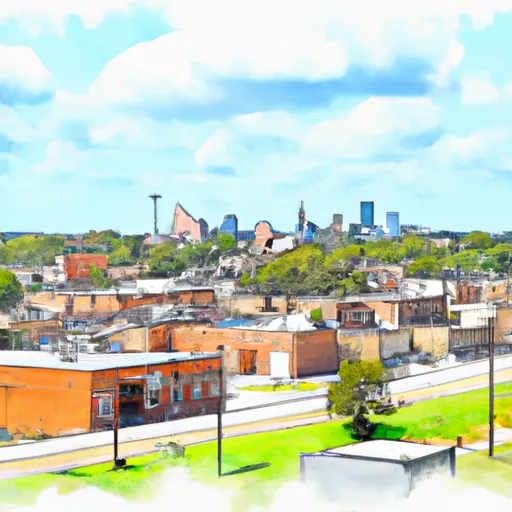-
 Snoflo Premium
Snoflo Premium
Get unlimited access to all our content
With no Ad interruptions! - Start Your Free Trial Login with existing account
Kirkland
Eden Index
Climate
7.9
•
Recreation
•
Community
•
Safeguard
3.2/10

Kirkland, Texas is a vibrant town situated in the western part of the state. Known for its diverse climate, Kirkland experiences hot summers and mild winters. Summers are characterized by temperatures in the high 90s, while winters usually see temperatures ranging from the 40s to 60s. The region also experiences occasional thunderstorms during the summer months.
Hydrologically, Kirkland benefits from its proximity to the Colorado River. The river not only provides scenic views but also offers various recreational activities such as fishing, boating, and swimming. The area is also dotted with numerous lakes and reservoirs, making it a haven for water enthusiasts.
Outdoor recreational opportunities in Kirkland are abundant. The town is surrounded by picturesque landscapes, including lush forests and rolling hills, which are perfect for hiking, camping, and birdwatching. Additionally, the region boasts several state parks, offering opportunities for biking, picnicking, and wildlife spotting. The natural beauty of the area provides a serene and peaceful environment that is ideal for outdoor enthusiasts and nature lovers alike.
What is the Eden Index?
The Snoflo Eden Index serves as a comprehensive rating system for regions, evaluating their desirability through a holistic assessment of climate health, outdoor recreation opportunities, and natural disaster risk, acknowledging the profound impact of these factors on livability and well-being.
Climate Health Indicator (CHI): 7.9
Kirkland receives approximately
565mm of rain per year,
with humidity levels near 84%
and air temperatures averaging around
17°C.
Kirkland has a plant hardyness factor of
7, meaning
plants and agriculture in this region tend to thrive during the non-winter months.
By considering the ideal temperature range, reliable water supplies, clean air, and stable seasonal rain or snowpacks, the Climate Health Indicator (CHI) underscores the significance of a healthy climate as the foundation for quality living.
A healthy climate is paramount for ensuring a high quality of life and livability in a region, fostering both physical well-being and environmental harmony. This can be characterized by ideal temperatures, reliable access to water supplies, clean air, and consistent seasonal rain or snowpacks.
Weather Forecast
Streamflow Conditions
Red-Pease
Area Rivers
Red-Pease
Snowpack Depths
Red-Pease
Reservoir Storage Capacity
Red-Pease
Groundwater Levels
Recreational Opportunity Index (ROI):
The Recreational Opportunity Index (ROI) recognizes the value of outdoor recreational options, such as parks, hiking trails, camping sites, and fishing spots, while acknowledging that climate plays a pivotal role in ensuring the comfort and consistency of these experiences.
Access to outdoor recreational opportunities, encompassing activities such as parks, hiking, camping, and fishing, is crucial for overall well-being, and the climate plays a pivotal role in enabling and enhancing these experiences, ensuring that individuals can engage in nature-based activities comfortably and consistently.
Catastrophe Safeguard Index (CSI):
The Catastrophe Safeguard Index (CSI) recognizes that natural disaster risk, encompassing floods, fires, hurricanes, and tornadoes, can drastically affect safety and the overall appeal of an area.
The level of natural disaster risk in a region significantly affects safety and the overall livability, with climate change amplifying these risks by potentially increasing the frequency and intensity of events like floods, fires, hurricanes, and tornadoes, thereby posing substantial challenges to community resilience and well-being.
Community Resilience Indicator (CRI):
The Community Resilience Indicator (CRI) recognizes that education, healthcare, and socioeconomics are crucial to the well-being of a region. The CRI acknowledges the profound impact of these elements on residents' overall quality of life. By evaluating educational resources, healthcare accessibility, and economic inclusivity, the index captures the essential aspects that contribute to a thriving community, fostering resident satisfaction, equity, and social cohesion.

